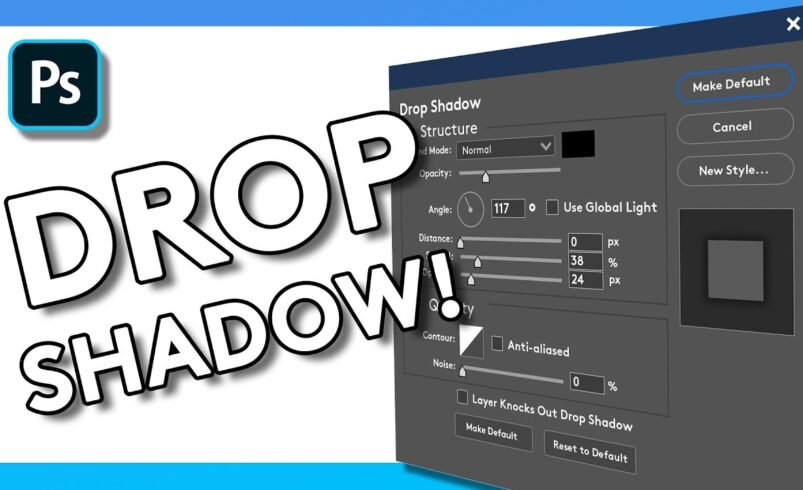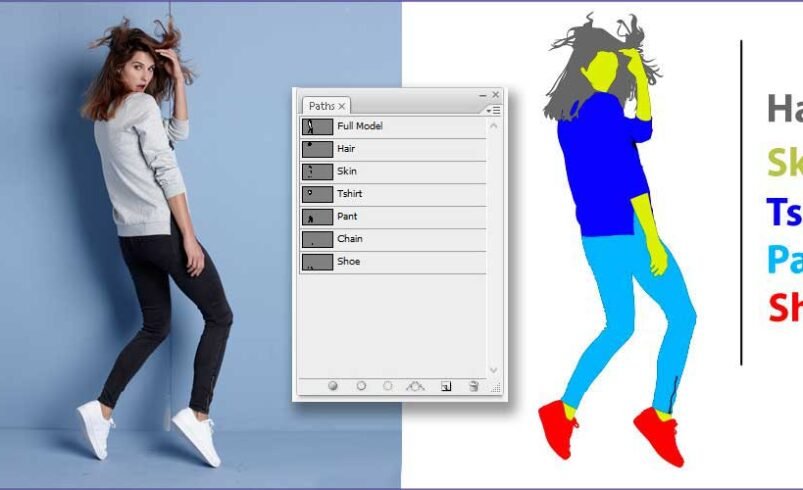A Comprehensive Guide to Drop Shadow Techniques for Product Photography

In the realm of product photography, creating captivating visuals is crucial for grabbing the attention of potential customers. Among the myriad of techniques available to photographers, drop shadows stand out as a powerful tool for enhancing the visual appeal of product images. In this comprehensive guide, we’ll delve into the world of drop shadow techniques, exploring how they can elevate your product photography to new heights.
Understanding Drop Shadows:
Drop shadows are a popular visual effect used in photography and graphic design to create the illusion of depth and dimension. Essentially, a drop shadow is a shadow that appears to be cast by an object onto a surface behind it. In product photography, drop shadows are often employed to make products appear more lifelike and three-dimensional.
Types of Drop Shadows:
Natural Drop Shadows: These shadows occur when light sources cast shadows naturally onto surfaces. In product photography, natural drop shadows are created by positioning the light source in such a way that it casts a shadow behind the product.
Artificial Drop Shadows: Artificial drop shadows are added to images during post-processing using photo editing software such as Adobe Photoshop. Photographers have greater control over the size, shape, and intensity of artificial drop shadows, allowing for more precise adjustments.
Techniques for Creating Drop Shadows:
Soft Drop Shadows: Soft drop shadows have gradual transitions between the object and the shadow, creating a subtle and natural effect. To create soft drop shadows, use diffused lighting or apply a Gaussian blur to the shadow in post-processing.
Hard Drop Shadows: Hard drop shadows have sharp, defined edges, giving objects a more dramatic and graphic look. To achieve hard drop shadows, use direct, harsh lighting or apply minimal feathering to the shadow in post-processing.
Directional Drop Shadows: The direction of the drop shadow can greatly influence the perception of depth and perspective in product photography. Experiment with different lighting angles to determine the most flattering direction for your drop shadows.
Distance and Size: Adjusting the distance and size of the drop shadow relative to the object can help create a sense of scale and distance. Closer shadows appear larger and more pronounced, while distant shadows appear smaller and softer.
Tips for Effective Drop Shadow Application:
Maintain Consistency: When photographing multiple products for a cohesive look, ensure that the drop shadows are consistent in terms of size, direction, and intensity.
Keep it Subtle: While drop shadows can add depth and dimension to product images, excessive or overly dramatic shadows can distract from the main subject. Aim for subtle, tasteful drop shadows that enhance the overall composition without overpowering the product.
Experiment and Iterate: Don’t be afraid to experiment with different drop shadow techniques and settings to find what works best for your specific products and aesthetic preferences. Iterate on your approach based on feedback and results.
Tips to Hire Professionals for Drop Shadow Service
When it comes to hiring professionals for drop shadow services, ensuring that you find the right team or individual for the job is crucial for achieving the desired results. Here are some tips to help you hire professionals for drop shadow services:
Define Your Requirements:
Before you start your search, clearly define your requirements for the drop shadow services. Determine the volume of images you need to be edited, the specific style of drop shadow you’re looking for, and any other preferences or specifications.
Research Service Providers:
Take the time to research different service providers offering drop shadow services. Look for companies or individuals with a strong portfolio showcasing their expertise in photo editing and drop shadow techniques. Check reviews and testimonials from past clients to gauge their reputation and reliability.
Evaluate Expertise and Experience:
When assessing potential service providers, pay attention to their expertise and experience in drop shadow services. Look for professionals who have a deep understanding of lighting, shadow creation, and photo editing software such as Adobe Photoshop. Experience working with similar projects or industries can also be advantageous.
Request Samples or Portfolios:
Ask for samples or portfolios of past work from the service providers you’re considering. This will give you a better sense of their style, quality of work, and attention to detail. Look for consistency in the quality of their drop shadows and ensure that their style aligns with your vision.
Inquire About Turnaround Time:
Time is often of the essence in photo editing projects, especially for businesses with tight deadlines. Inquire about the service provider’s turnaround time and ensure that they can deliver edited images within your required timeframe without compromising quality.
Communication and Collaboration:
Effective communication is essential when working with professionals for drop shadow services. Ensure that the service provider is responsive to your inquiries, understands your requirements, and is open to collaboration. Clear communication will help avoid misunderstandings and ensure that the final results meet your expectations.
Discuss Pricing and Terms:
Clearly discuss pricing, payment terms, and any additional fees or charges associated with the drop shadow services. Make sure you understand the pricing structure and that it aligns with your budget constraints. Consider obtaining quotes from multiple service providers to compare costs and value.
Check for Customization Options:
Every project is unique, and you may have specific requirements or preferences for your drop shadow effects. Ensure that the service provider offers customization options and is willing to accommodate your needs to achieve the desired look for your images.
Review Contract and Terms of Service:
Before finalizing the agreement, carefully review the contract and terms of service provided by the service provider. Pay attention to important details such as project scope, deliverables, revisions policy, confidentiality agreements, and dispute resolution procedures.
Seek Recommendations and Referrals:
If possible, seek recommendations and referrals from colleagues, peers, or industry contacts who have experience working with professional drop shadow service providers. Personal recommendations can help you find reliable and trustworthy professionals who deliver high-quality results.
End Words:
Drop shadows are a versatile and powerful tool in the arsenal of product photographers, allowing them to create visually compelling images that draw viewers in. By mastering the art of drop shadow techniques, photographers can elevate their product photography to new levels of professionalism and impact. Experiment with different types of drop shadows, techniques, and settings to discover the perfect balance that enhances your product images while staying true to your brand’s identity. With practice and patience, you’ll be able to harness the full potential of drop shadows to create stunning visuals that leave a lasting impression on your audience.




